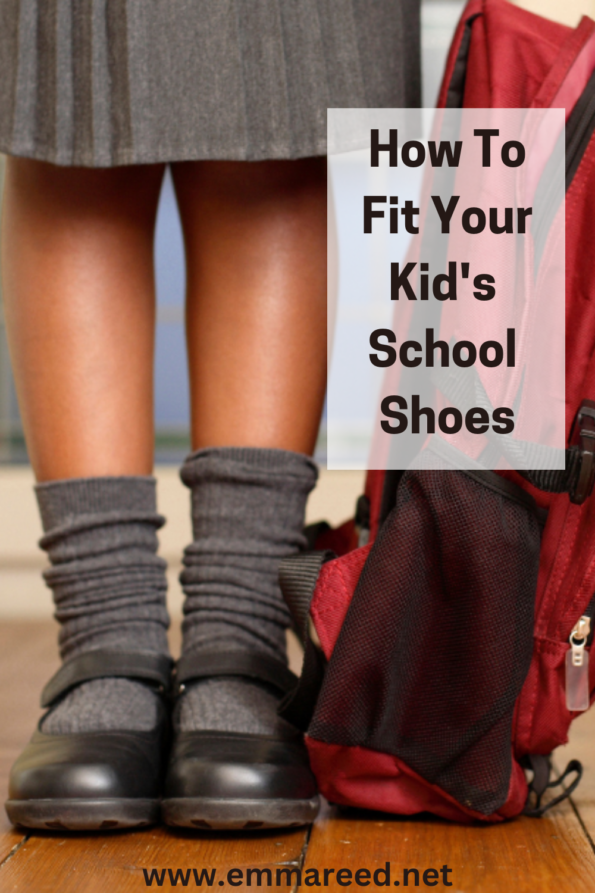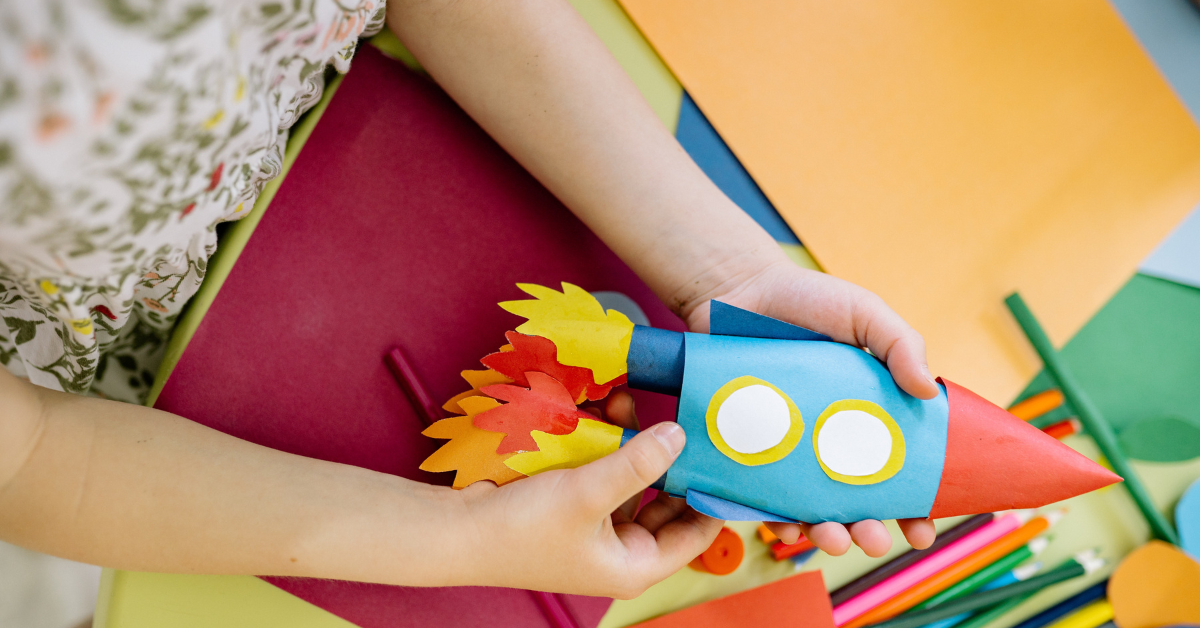
How To Fit Your Kid’s School Shoes

As somebody who worked in shoe retail for over 8 years, I know how important it is to look after your kid’s foot health and because of this, I am going to share all of my shoe fitting knowledge with you and let you in on how to fit your kid’s school shoes following all the steps that a shop will do.
Where to Shop and What to Consider
Measuring
Before we begin with the fitting I wanted to touch on where to shop and what to look for when selecting your kid’s school shoes. If you are not going to buy in a shop that specialises in shoe fitting, I would definitely advise to at least get your child measured in one just so that you have a rough idea of what you should be looking for elsewhere. The most important thing to bear in mind here is that a foot measurement is only a guide, it is not an exact science. Every brand/shop is different and all shoes can be cut differently so use this number as your starting guide and follow my shoe-fitting tips below to find the right shoe type and size for your child.
Materials
Always check the labels to find out what the shoes are made of. Plastic will most probably make a child’s feet sweat, smell and could leave them uncomfortable. Suede may look good but unless you are prepared to pay for the protector spray, they will not be waterproof. Canvas is great for the summer but this material is not waterproof or warm for colder months. Leather is usually your best option as it is breathable, it moulds to your child’s foot and, to some extent, it is waterproof (not 100% as leather is skin and skin has pores). Goretex is your 100% waterproof shoe but this will cost you much more.
High Street Store Shoes
If you are shopping in a fashion type store, the first thing you need to do when you pick up a shoe is to bend them. Do they even bend?! Many I have seen don’t flex at all which is no good for active kids. You want a shoe that will move with their foot as they walk, run, climb etc. You don’t want one that will encumber their movement. I would also check them carefully for the quality, how well they are constructed and decide whether they have just been made as fashion statements rather than an all day shoe i.e. flimsy soles, cheap materials, no straps, glitter, thin outer material.
Secondhand Shopping
If you are shopping secondhand I would advise to only look for shoes that have been lightly worn as heavily worn shoes will be moulded to the previous child’s foot shape. I would look carefully at all the images, checking for quality and shape and size. If you are using a site like Vinted, ask the seller questions about how the shoes come up and for additional images if required. It is slightly harder to shop for shoes this way but I have done it successfully before so it can definitely be done.
Shoe Styles
Finally, shoe style. Every child’s foot is different and what suits one child may not suit another so you need to take into consideration things such as their width, instep, ankle shape/size and so on. The best type of shoes to opt for are those with good straps or laces over slip ons and that look and feel supportive with a low heel or moulded sole.
The six-point fit check
Now you have picked out some shoes it is time to try them on and compare the fits. Here are the 6 points you need to check when fitting kid’s school shoes:
1. Length
In a shoe shop which offers a fitting service, ‘growing room’ is usually built into their shoes. In most other retailers, this won’t be a feature so you need to check this yourself and go up in size accordingly. What you are aiming for is around a thumb width of space at the end of the shoe from the big toe. Anything more will become a trip hazard anything less will mean that the shoes won’t last very long.
2. Width
The widths in a shoe fitting shop are usually seen as D, E, F, G and H. As a guide for you, a D is extremely narrow and may be difficult to come by. E is narrow, F is average, G is wide and H is extra wide. These letters are just as important as the length. To check that the width is ok in the shoe you have chosen, you need to feel down the sides of the shoes to check if any part of the foot or toes are pushing out anywhere. If there is pressure or you can clearly see the outline of the foot, the child will end up with sores, blisters and possibly hardened skin. If there is too much space inside they are too wide and will cause the foot to move from side to side, leading to blisters. You want comfort and support for them.
3. Depth
What you are checking for here is that when you rub your thumb over the top of the shoe you have some movement in the material. If it is tight and doesn’t move there is not enough depth to the shoe for it to be comfortable for your child. If there is too much depth, the foot will not be supported, however, this may be corrected by using insoles which will lift the foot up in the shoe and remove some of this extra space. This isn’t a guaranteed fix and if you can still pinch the material on the top, you will need to try a different pair of shoes.
*please note insoles do not make a shoe shorter
4. Toplines
The toplines are the areas surrounding the ankles. Does any part of the shoe hit the ankle bone? If so, this could rub and hurt your child. Does the fastening sit nicely up the foot? Are there any gaps? If you can get your finger down the side of the ankle these do not fit. Again, you are looking for support and comfort.
5. Slip Test
Make sure you put the shoes on and fasten them whilst your child is sitting down. Now get them to stand up and re-check the fastening (the foot shape changes from sitting to standing). You will probably find that you will need to tighten them slightly. Now pop them back on the seat and give the shoes a tug. Do they stay on? If not, these will most probably end up rubbing their ankles and possibly come off when they are running around the playground. Slipping shoes will also make a child naturally grip with their toes to help to keep them on which can cause foot health issues later on in life such as bunions. Choose a shoe that grips well (painlessly) and stays in place as you tug and when they walk (roll trousers up so you can check if the shoe slips as your child walks).
6. Can They Walk in Them?
And lastly, can they walk in them? Get your child to walk round and round the shop or home, get them to jog a little and jump, get them to pretend to kick a football and so on. Really put the shoes through their paces before purchasing them. And importantly, make sure your child is happy in them and will want to wear them all day.
I hope these school shoe fitting tips will help you to have a smooth back to school process

Pin for later:





